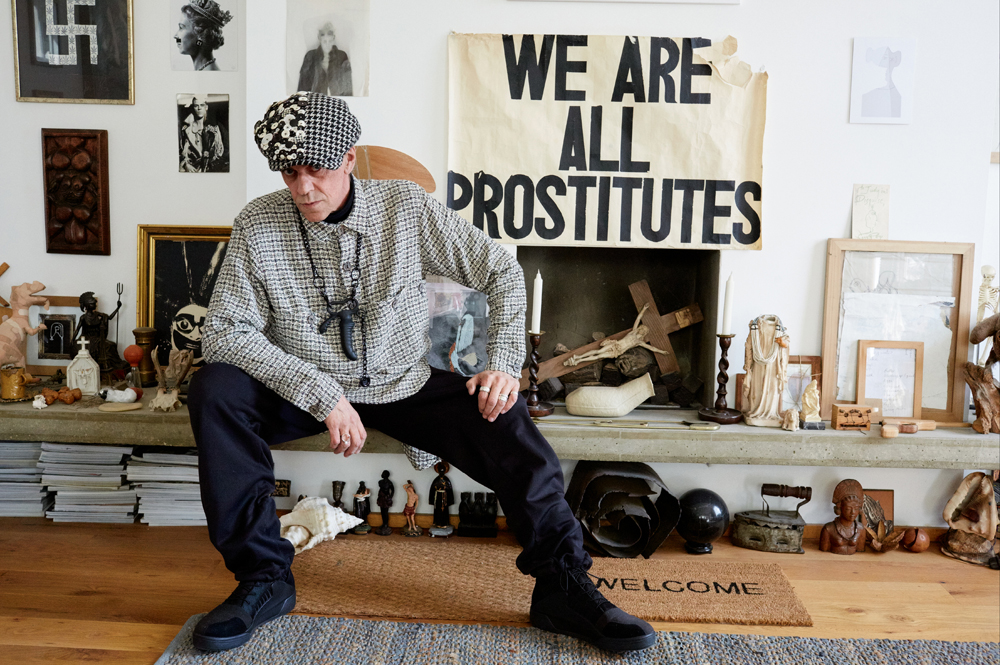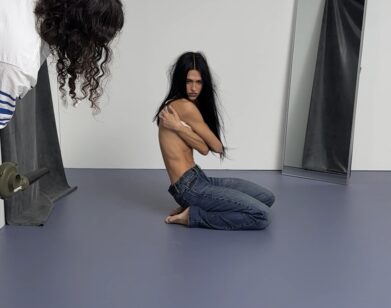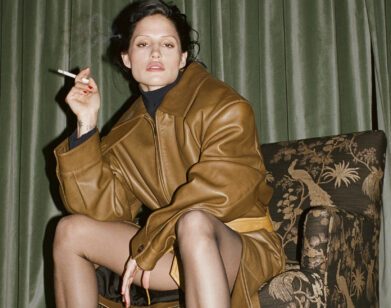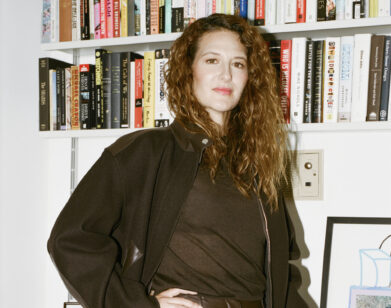Judy Blame
The iconic stylist and accessories designer Judy Blame (a pseudonym inspired by Judy Garland) is one of those vociferous do-it-yourselfers who has influenced fashion with one foot in the underground, always keeping an eye out for the next outré thing. After running away from his home in the Devonshire countryside at age 17, Blame found salvation in punk (“It suited my rebellion,” he says), first in Manchester, where he linked up with Peter Saville and Linder Sterling, and then in London, where the moment’s brashness distilled into the flamboyant club scene and “mad peacock characters” of the New Romantics. “It was a big age to experiment,” he recalls. “To go out to nightclubs, we didn’t have much money, so I started making jewelry to change my outfit every week.”
Blame’s idiosyncratic jewelry pieces, works of bricolage pieced together from buttons, chains, and found objects, got him noticed. “It wasn’t really a plan; it just sort of happened. People would see me out in it and ask me to make them a piece. I met Susanne Bartsch at a nightclub, and she bought my jewelry for her shop in New York.”
In the mid-’80s, he fell in with Ray Petri’s Buffalo collective and went on to style editorials for i-D and The Face and to create looks for musicians who helped define the era’s style (Neneh Cherry’s “Buffalo Stance” look and Björk’s soft Margiela sweater on the cover of Debut are his touch). High fashion came calling too. Blame’s collaborations with John Galliano, Rei Kawakubo at Comme des Garçons, and last year, Kim Jones at Louis Vuitton have been unique amalgamations in fusing his distinctive aesthetic POV with the fashion establishment.
This summer, Blame is the subject of his first major solo exhibition, at London’s Institute of Contemporary Arts starting in late June, and he debuts his latest project, a series of limited-edition boxes for the Jo Malone London fragrance house. The black-and-cream packaging with a button motif takes its cue from the Pearly Kings and Queens, a centuries-old London institution and charity group, whose members wear clothing festooned with pearl buttons fashioned into various patterns. “I knew that they were looking for something that had that English feel to it,” he says. “Just after the meeting, I got on the bus to go home, and the Pearly King and Queen of Islington got on the bus. I thought, ‘That’s a sign.’ ”







